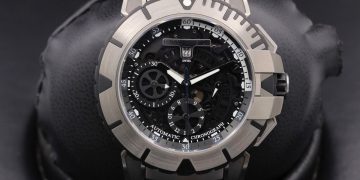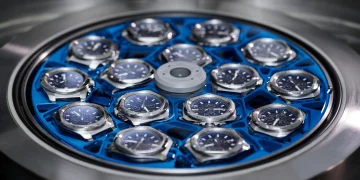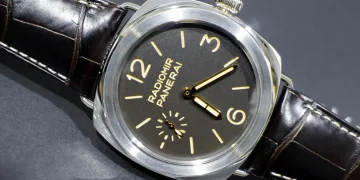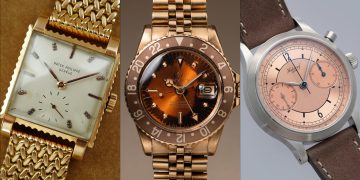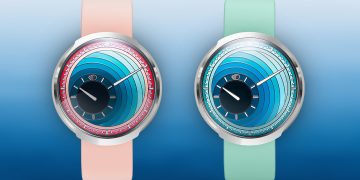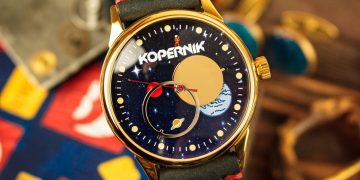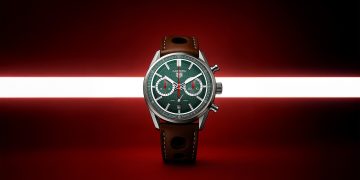Introduction: Understanding the Significance of Tourbillon Watches
- Overview of the Tourbillon
Begin with a brief explanation of the tourbillon complication. This remarkable invention, created by the legendary Swiss watchmaker Abraham-Louis Breguet in the 18th century, has become one of the most revered and iconic features in horology. The tourbillon was originally designed to improve timekeeping accuracy by compensating for gravity’s effects on the escapement mechanism. - The Evolution of Tourbillons
Provide a high-level overview of how the tourbillon has evolved over time, from its humble beginnings to the sophisticated and highly regarded models produced today. Include a mention of various innovations in the tourbillon’s design, including multi-axis tourbillons and the rise of tourbillons in luxury watchmaking. - Purpose of the Article
The article will focus on the historical significance of the tourbillon complication, its evolution over centuries, and how major watch brands have adopted, refined, and built upon Breguet’s original concept. It will also explore the broader impact of the tourbillon on the watchmaking industry and culture.
1. The Birth of the Tourbillon: Abraham-Louis Breguet’s Ingenious Invention
- Abraham-Louis Breguet: The Father of the Tourbillon
Discuss Abraham-Louis Breguet, his life, and his monumental contributions to horology. Breguet was an innovator who had an extraordinary influence on the development of mechanical watches. He introduced several significant advancements, such as the Breguet hands, the self-winding watch, and, of course, the tourbillon. - The Purpose of the Tourbillon in Breguet’s Time
Explain the problem Breguet sought to solve: gravity’s impact on the accuracy of pocket watches. Before the invention of the tourbillon, watches would lose accuracy when positioned in the same direction for extended periods of time due to gravity’s effect on the balance wheel and escapement. Discuss how the rotating cage of the tourbillon alleviated this issue, allowing for greater accuracy. - The First Tourbillon Watches
Detail Breguet’s earliest tourbillon watches, such as the Breguet No. 1176, which was made in 1801. Discuss how these watches were highly sought after by the elite and royalty of the time, marking the beginning of the tourbillon’s place in horological history.
2. The Impact of the Tourbillon on Watchmaking: From Innovation to Icon
- The Tourbillon’s Role in Watchmaking
Explain the role of the tourbillon as a mechanical marvel and a demonstration of a watchmaker’s skill. While it is not essential for accuracy in modern watches, the tourbillon is still highly valued for its engineering complexity, aesthetic appeal, and the prestige it confers on a brand. Its continued use serves as a symbol of technical mastery and luxury craftsmanship. - The Influence on Later Watchmakers
Explore how other watchmakers adopted and modified the tourbillon, advancing the technology. Discuss notable figures such as John Arnold, Thomas Mudge, and others who incorporated their versions of the tourbillon into their creations, expanding its legacy and influence.
3. Tourbillons in the Modern Era: The Renaissance of the Complication
- The Decline and Resurgence of the Tourbillon
Discuss how, with the rise of quartz watches in the 20th century, the tourbillon fell out of practical use for timekeeping accuracy. However, it began to make a comeback in the 1980s and 1990s, driven by the luxury watch market’s desire to showcase traditional mechanical prowess. - The Tourbillon in Luxury Watchmaking Today
Explore how prestigious brands like Patek Philippe, Audemars Piguet, Jaeger-LeCoultre, and Vacheron Constantin have embraced the tourbillon, creating stunning models that are highly prized by collectors. Discuss how the complication has been refined and integrated into some of the most exquisite and expensive timepieces on the market today. - Modern Innovations
Highlight the multi-axis tourbillon, which rotates on more than one axis and requires even more intricate engineering. These more complex variations continue to evolve, showcasing the watchmaker’s expertise and pushing the limits of mechanical design.
4. Key Watch Brands and Their Contributions to the Legacy of the Tourbillon
- Patek Philippe
Delve into the history and significance of Patek Philippe’s tourbillon models. Patek Philippe has consistently produced tourbillons that exemplify their commitment to innovation and precision. Discuss iconic Patek Philippe models like the Patek Philippe Ref. 3939 and their ongoing contributions to the tourbillon complication. - Audemars Piguet
Explore how Audemars Piguet has made the tourbillon a central feature in many of its high-end watches. Discuss iconic models like the Royal Oak Tourbillon and the brand’s history of pushing the boundaries of traditional watchmaking with technical innovations in their tourbillon designs. - Jaeger-LeCoultre
Jaeger-LeCoultre is known for its exceptional engineering, and its Reverso Tourbillon and Master Grande Tradition models highlight the brand’s expertise in creating tourbillons. Discuss Jaeger-LeCoultre’s influence on the evolution of the tourbillon and the brand’s role in making this complication more accessible to watch enthusiasts. - Vacheron Constantin
Vacheron Constantin’s Malte Tourbillon and other high-complication models have demonstrated the brand’s ability to fuse historical design with modern precision. Explore how Vacheron has built upon the original concept of the tourbillon while also introducing new and innovative takes on this classic complication. - Breguet’s Continued Legacy
Finally, revisit Breguet, the brand that created the tourbillon. Discuss how the modern Breguet Classique Tourbillon models maintain the spirit of their historical counterparts, continuing Breguet’s legacy as the leader in fine watchmaking and tourbillon development.

5. The Cultural Significance and Prestige of Tourbillon Watches
- Symbol of Luxury and Status
Discuss how tourbillon watches have become synonymous with luxury, craftsmanship, and status. Explain how the ownership of a tourbillon is often seen as a mark of exclusivity and the ultimate demonstration of refined taste and financial success. - The Tourbillon in Popular Culture
Examine how tourbillon watches have made appearances in popular culture, from movies and TV shows to high-profile celebrity endorsements. How have these public representations helped to elevate the tourbillon complication as a symbol of both innovation and prestige? - Tourbillon Watches as Collectibles
Tourbillons are also regarded as highly collectible. Explore how collectors seek out rare and limited-edition tourbillons, and the factors that influence their desirability, such as brand reputation, movement complexity, and historical significance.
6. The Future of Tourbillon Watches: Where Is the Complication Headed?
- Technological Advancements
Look at the future of the tourbillon complication. What technological innovations are watchmakers exploring to make tourbillons more accurate, more affordable, or even more spectacular in design? Will new materials, like silicon, become more prominent in future tourbillon movements? - The Role of the Tourbillon in Modern Watchmaking
While the tourbillon is no longer required for accuracy in modern watches, it still serves as a showcase of the watchmaker’s artistry. What is the future of the tourbillon in the industry? Will it remain a luxury item for collectors, or will it find its place in more accessible timepieces?
Conclusion: The Timeless Appeal of Tourbillon Watches
- Summary of the Tourbillon’s Impact
Recap the historical journey of the tourbillon, from its inception in the 18th century to its place in modern luxury watchmaking. Reflect on how it has influenced the art of watchmaking and how it continues to be a symbol of technical excellence and craftsmanship. - The Ongoing Legacy of Tourbillon Watches
Conclude by highlighting the enduring appeal of tourbillons. As a blend of history, craftsmanship, and innovation, tourbillon watches continue to captivate collectors, enthusiasts, and watchmakers around the world.



